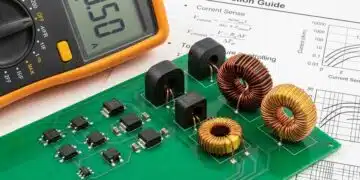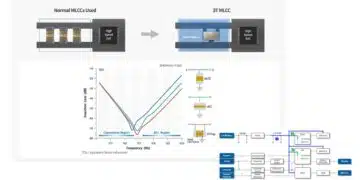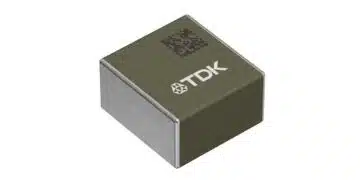This article identifies some common causes of oscillations in flyback converters and presents video from Sam Ben Yaakov that provides detailed insight into the potential causes.
Flyback converters can experience oscillations due to several design and component-related factors. These issues often manifest as audible noise, flickering, or instability in output voltage/current. Below are the primary causes and their underlying mechanisms:
Feedback Loop Instability
- Slow feedback response can lead to pulse bunching, where the controller lags in adjusting the duty cycle, causing irregular switching and oscillations.
- Inadequate compensation networks or using low-gain optocouplers (e.g., non-D-type) may destabilize the loop. Switching to high-gain optocouplers or adding feedback-loop accelerators can improve stability.
Transformer Design Flaws
- Leakage inductance from improper core air gaps or winding arrangements (e.g., non-interleaved windings) generates voltage spikes and parasitic ringing.
- Air gap optimization is critical: one study found a 0.7 mm gap minimized spikes, while larger gaps increased leakage.
Component-Related Noise
- Ceramic capacitors under high dV/dt stress exhibit the reverse piezoelectric effect, vibrating and generating audible noise. Replacing them with metal-film capacitors or adjusting dielectric materials can mitigate this.
- Ferrite core magnetostriction in transformers can also produce audible buzzing, especially at lower switching frequencies.
Parasitic Resonances
- Stray capacitance and inductance in transformer windings or PCB layouts create resonant loops, causing jitter and duty-cycle variations. Damping these resonances or minimizing parasitic elements reduces oscillations.
Control Circuit Issues
- Poorly implemented CV/CC control (e.g., diode-OR configurations) may fail to regulate smoothly at low loads, leading to flickering and instability.
- Insufficient snubber/clamp circuits allow voltage spikes to propagate, exacerbating oscillations. Adjusting snubber resistor/capacitor values or using Zener clamps can help.
Design and Load Conditions
- Low standby power modes often force converters into discontinuous conduction mode (DCM), lowering switching frequencies and increasing audible noise susceptibility.
- Load-dependent instability (e.g., flickering at 1–5% load) may require revisiting transformer inductance or feedback compensation for wider operating ranges.
To troubleshoot, prioritize checking feedback loop stability, transformer leakage inductance, and component substitutions (e.g., capacitors). Experimental adjustments to air gaps, snubber networks, and control circuitry are often necessary to isolate and resolve oscillations.
further read reference:
Flyback Converter Design and Calculation






























